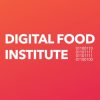Food health technology assessment
In addition to data analysis activities, DFI also aims to apply and develop other, complex analytical methodologies. These analytical techniques help to understand the processes in the food chain better and can be applied to industrial and regulatory problem solving. When it comes to food safety decisions, in addition to consumer health, other factors, e.g. feasibility of the intervention, costs, ethical considerations, etc. also play a role that are usually not taken into account by the decision makers. Thus, these decisions are typically not systematic, evidence based, transparent or reproducible. However, there is a possibility to move from qualitative decisions to quantitative ones. The methodology of health technology assessment (HTA), which we have started to adapt to the field of food chain safety (called Food HTA), can help us in this.
The scope of the planned analyses covers disease burden calculations, food chain safety risk assessment and decision-making methodological developments, such as the use of cost-utility analysis, cost-benefit analysis and multi-criteria decision analysis (MCDA)
Some elements of HTA can also be used in risk-benefit analysis. The relationship between nutrition and health is a major issue worldwide, including in our country. Societal trends (ageing population, chronic diseases, obesity, etc.) are increasing the awareness of the role of proper nutrition. At the same time, consumers are becoming increasingly aware of their food purchasing and consumption habits. To make informed choices about their diet, they need new information about food.
Many foods have risks (e.g. microbiological, chemical) and positive effects (e.g. nutrients, microelements). It is important to be able to assess the risks and positive effects of food in one system. This requires methodological development and has to be in line with EFSA’s “holistic risk assessment methodology”. For this, an integrated, multidisciplinary approach is needed that includes toxicology, microbiology, nutrition, epidemiology. In addition, to compare the risks and benefits, a single measure is needed that combines different dimensions of health effects (e.g. quality-of-life-adjusted life years – QALYs). Risk-benefit analysis provides an opportunity to assess the risks and positive impacts of food in such an integrated framework.
Related publications
Országh, E.; De Matteu Monteiro, C.; Pires, S. M.; Jóźwiak, Á.; Marette, S.; Membré, J.-M.; Feliciano, R. J. (2024). Holistic risk assessments of food systems. Global Food Security, 43, 100802.
Országh, E.; Jóźwiak, Á.; Süth, M.; Micsinai, A.; Urbányi, B.; Vokó, Z.; Kaló, Z.; Pitter, J. G. (2021). Az egészségügyi technológiaértékelés és kockázat-haszon elemzés alkalmazási lehetőségei az élelmiszerlánc-biztonság területén. Áttekintés. (The applicability of health technology asssessment and risk-benefit analysis in the food safety domain. Review). Magyar Állatorvosok Lapja, 143 pp. 625-640. , 16 p.
Országh, E., Pitter, J. G., Kaló, Z., Vokó, Z., Józwiak, Á. (2021). Retrospective cost-utility analysis of the Non-typhoidal Salmonella control programme in Hungary. Food Control, 120, 107529.
Pitter J., Vokó Z., Józwiak Á., Berkics A. (2018). Campylobacter control measures in indoor broiler chicken: Critical re-assessment of cost-utility and putative barriers to implementation. Epidemiology and Infection, 1-12.
Pitter J. G., Jóźwiak Á., Martos É., Kaló Z., Vokó Z. (2015). Next steps to evidence-based food safety risk analysis: opportunities for health technology assessment methodology implementation. Studies in Agricultural Economics 117, 155-161.
- 2021 DFI. All rights reserved.
